Hidden in the stunning limestone karst landscape of Ninh Binh, the Hoa Lu Ancient Capital is a treasure trove of history and spirituality. The pagodas within Hoa Lu are not only places of worship but also living reminders of the dynasties that built Vietnam’s foundations. As the country’s first capital, Hoa Lu still resonates with the spirit of its early emperors. At the heart of these ancient structures lies Hoa Lu Pagoda, surrounded by other notable spiritual landmarks like the Bai Dinh Pagoda Hoa Lu complex. Each pagoda offers travelers an opportunity to experience Vietnam’s blend of history, nature, and spirituality.
At Pioneer Sail Travel, we invite you to explore these sacred places, where the past whispers through the stones and pagoda bells, guiding visitors toward a deeper understanding of Vietnam’s cultural heritage.
Hoa Lu Pagoda – A Testament to Vietnam’s Ancient Spirituality
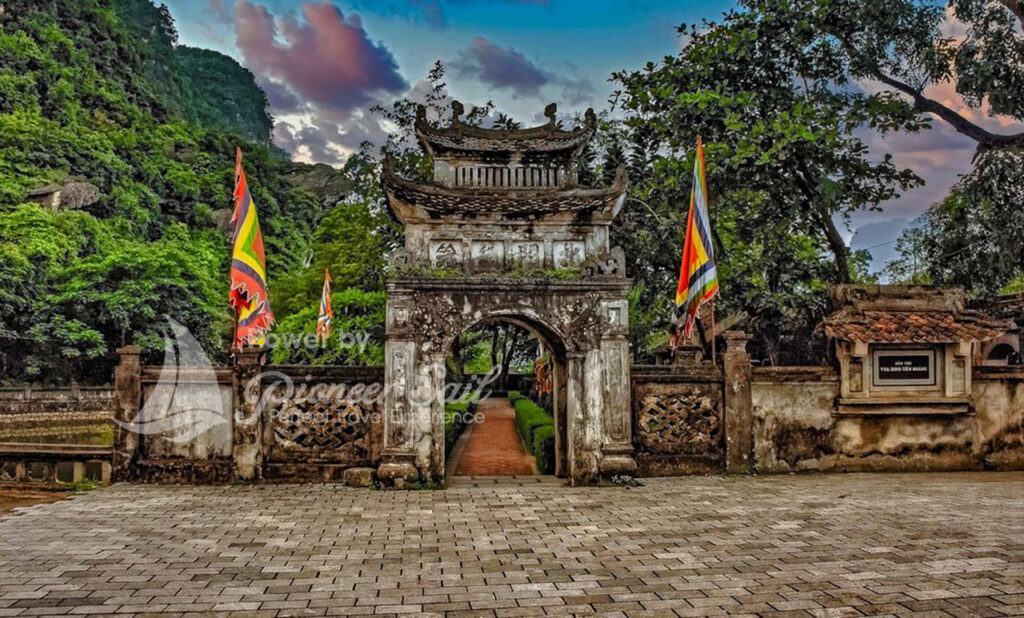
Historical Overview
The Hoa Lu Pagoda was built during the Dinh and Early Le Dynasties in the 10th century, serving both as a place of worship and a venue for imperial ceremonies. During this time, Hoa Lu was the heart of political and military power, and religion played a crucial role in maintaining stability. Emperor Dinh Tien Hoang, who unified the country, commissioned the construction of this pagoda to honor Buddha and pray for national peace.
When Ly Cong Uan relocated the capital to Thang Long (Hanoi) in 1010 AD, the Hoa Lu Pagoda transitioned from a political space to a spiritual center. Despite the move, annual festivals and rituals kept the pagoda’s significance alive for centuries. Today, the Hoa Lu Festival in April attracts visitors from all over Vietnam, celebrating the contributions of the Dinh and Le emperors. The festival includes processions, offerings, and folk games, creating a vibrant atmosphere that transports visitors to the past.
Timeline of Hoa Lu Pagoda
| Year | Event |
| 968 AD | Dinh Bo Linh declares himself emperor and builds Hoa Lu Pagoda |
| 1010 AD | Ly Cong Uan relocates the capital, leaving Hoa Lu as a religious site |
| 2018–2023 | Restoration efforts preserve the architecture and artifacts |
Architectural Highlights
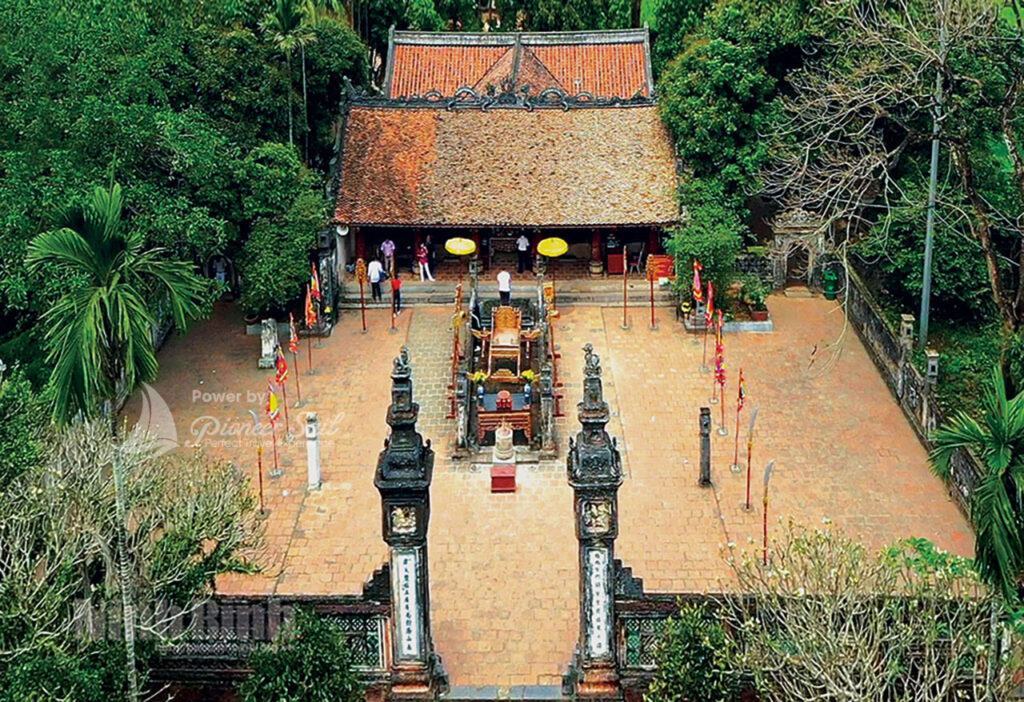
The architecture of Hoa Lu Pagoda reflects traditional Vietnamese design, blending wooden structures, stone altars, and carved decorations. The prayer hall features a bronze statue of Emperor Dinh Tien Hoang, surrounded by incense burners and wooden panels inscribed with ancient prayers. The gardens, dotted with centuries-old bonsai trees and lotus ponds, create an environment where nature and spirituality coexist.
The main entrance gate, often referred to as the Emperors Gate, symbolizes the transition from the physical world to the spiritual realm. The dragon motifs carved into the beams represent power and protection, while the lotus flowers symbolize purity and enlightenment. Visitors often light incense at the altars, leaving offerings of fruit and flowers to honor both the Buddha and the ancestors.
| Architectural Element | Symbolism |
| Dragon Carvings | Represents power and protection |
| Lotus Flower Motifs | Symbolizes purity and spiritual awakening |
| Bronze Statue of Dinh Tien Hoang | Honors the first emperor of Vietnam |
Pro Tip: The best time to visit Hoa Lu Pagoda is early in the morning, when the temple grounds are quiet and the air is filled with the scent of burning incense. This tranquil environment allows visitors to connect with the spiritual essence of the place.
Bai Dinh Pagoda Hoa Lu – The Majestic Beacon of Vietnamese Buddhism
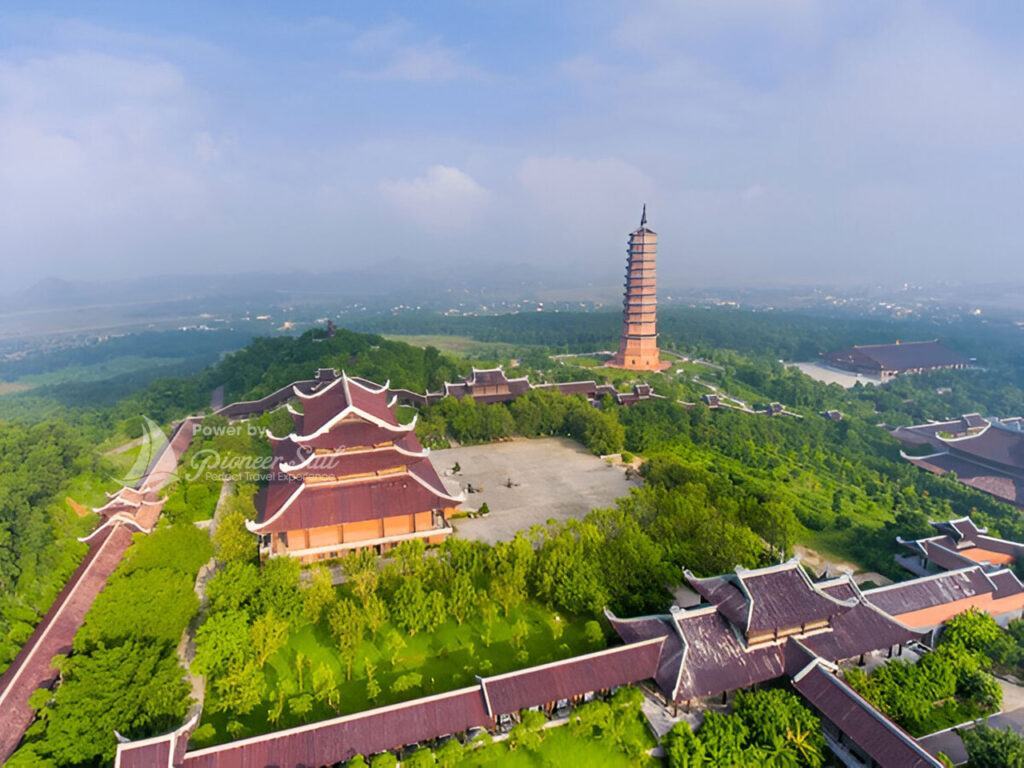
An Overview of Bai Dinh Complex
Located just 15 km from Hoa Lu, the Bai Dinh Pagoda complex is a must-visit destination for those seeking a deeper Buddhist experience. Spanning over 500 hectares, Bai Dinh is the largest Buddhist complex in Southeast Asia and combines ancient worship practices with modern religious architecture. The complex’s history dates back to the 11th century, when monks first used the natural caves in Bai Dinh Mountain as meditation retreats. The modern section, completed in 2010, was built to commemorate 1,000 years of Thang Long-Hanoi and has since become a major pilgrimage site.
Bai Dinh is home to several impressive features, including a 100-ton bronze Buddha statue, a 36-ton bell tower, and 500 Arhat statues—each carved with unique expressions and postures. Visitors can walk along the Arhat Corridor, which spans more than a kilometer, reflecting on the statues that represent human diversity and life’s many paths.
| Highlight | Detail |
| Bronze Buddha Statue | Weighs 100 tons, located in the Great Hall |
| Bell Tower | Houses a 36-ton bronze bell, used during ceremonies |
| Arhat Corridor | Features 500 Arhat statues, each with a distinct expression |
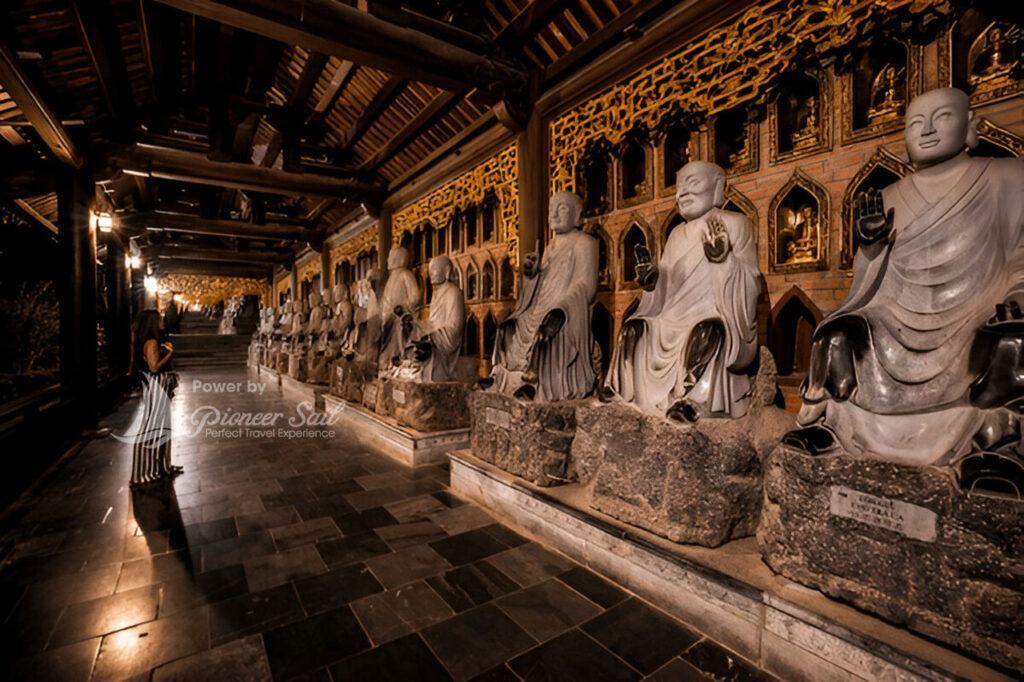
Spiritual Practices and Cultural Significance
The Bai Dinh Pagoda complex hosts several important Buddhist events throughout the year. The Full Moon Festival and Lunar New Year celebrations draw thousands of pilgrims who participate in prayer ceremonies, meditation sessions, and candlelight offerings. During these events, the Great Hall and the Bell Tower become the focal points of worship, with visitors lighting incense and chanting prayers. The modern architecture of Bai Dinh reflects the same spiritual values found in the ancient Hoa Lu Pagoda, emphasizing the themes of compassion, wisdom, and unity.
Traveler Insight: “Walking along the Arhat Corridor felt like stepping into a sacred realm, where each statue told a different story. The serenity of Bai Dinh made it a perfect place for reflection.”
Pro Tip: The best time to visit Bai Dinh Pagoda Hoa Lu is early morning or late afternoon, when the sun casts a golden light over the limestone mountains. Visitors can also stay for the sunset, which offers breathtaking views of the Trang An Landscape Complex.
Nhat Tru Pagoda – The One-Pillar Wonder of Hoa Lu
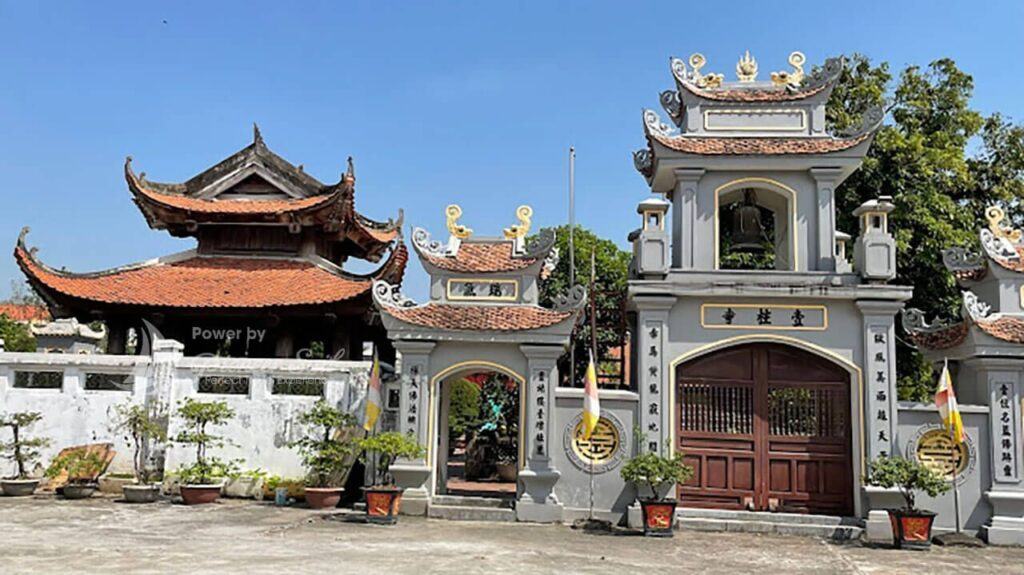
A Unique Spiritual Symbol
Nhat Tru Pagoda, also known as the One-Pillar Pagoda of Hoa Lu, was built during the Le Dynasty in the 10th century. It is one of the oldest Buddhist structures in Vietnam and holds historical significance not just for its architecture but also for its spiritual importance. The most distinctive feature of Nhat Tru Pagoda is the stone pillar, inscribed with ancient Buddhist scriptures, symbolizing enlightenment and wisdom.
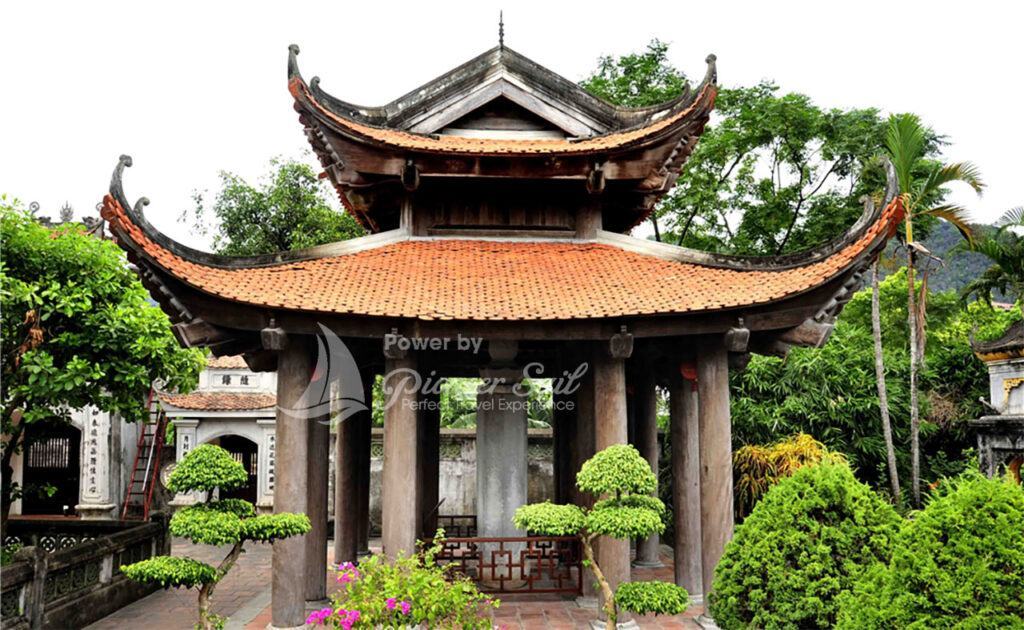
The pagoda’s design reflects the simplicity and purity of early Vietnamese Buddhist architecture, with wooden beams, stone altars, and a bell tower that still resonate with chants during prayer ceremonies. Nhat Tru Pagoda has a tranquil atmosphere, making it a favorite spot for those seeking meditation and reflection.
The January 15th lunar ceremony at Nhat Tru Pagoda is one of the most anticipated events in the region, drawing pilgrims who come to pray for peace and blessings. This spiritual gathering offers a window into Vietnam’s ancient religious practices, which remain largely unchanged after centuries.
Am Tien Pagoda – A Hidden Sanctuary in the Valley of Death
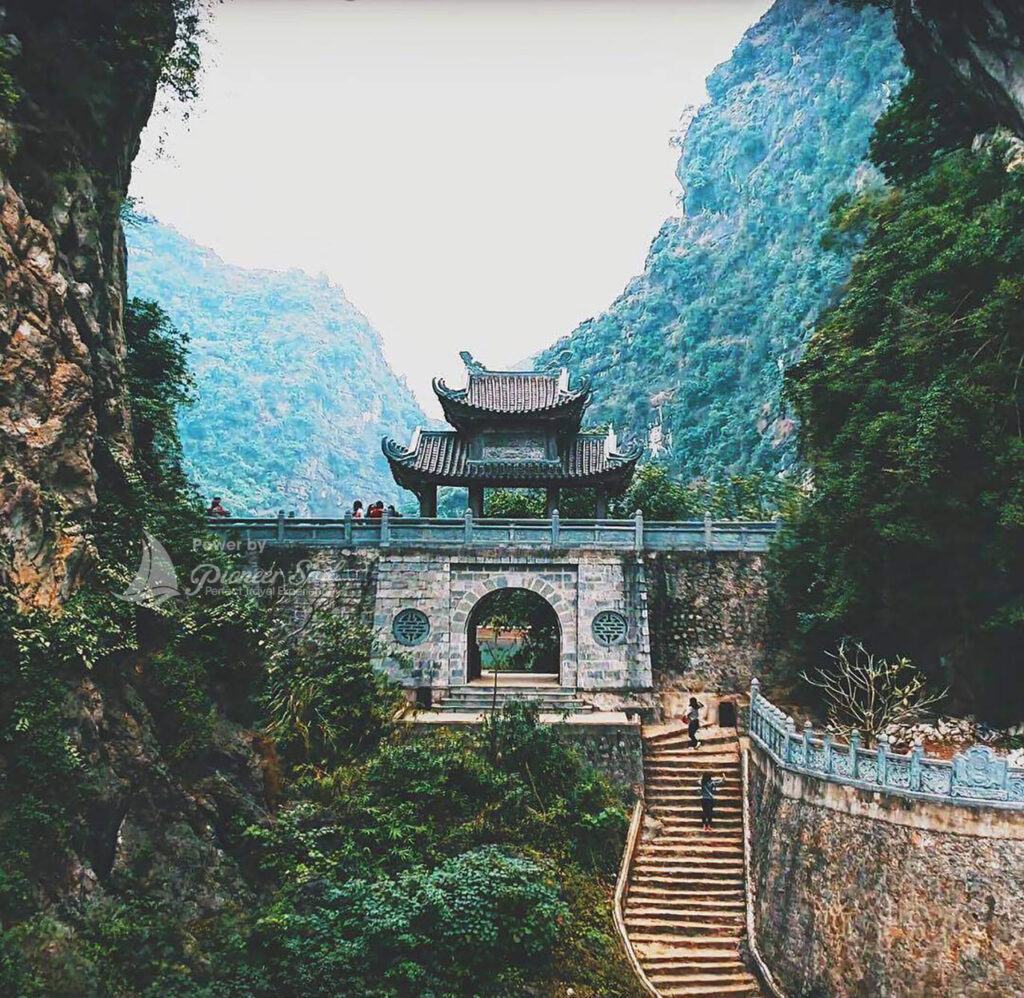
Am Tien Pagoda is located within Am Tien Cave, often called the “Valley of Death” due to its remote and rugged terrain. Built during the reign of Emperor Dinh Tien Hoang, this pagoda served as both a place of meditation and a site of spiritual exile. According to local legends, Queen Duong Van Nga—who was married to both Dinh Tien Hoang and his successor Le Dai Hanh—retreated here to practice Buddhism in her later years.
Visitors must climb a steep stone path to reach Am Tien Pagoda, which is nestled inside a limestone cave. The pagoda’s unique setting creates a mystical atmosphere, with stalactites dripping from the ceiling and incense smoke swirling through the air. For those willing to make the trek, the rewards include breathtaking views of the surrounding mountains and lakes.
Bich Dong Pagoda – The Second Most Beautiful Cave in Vietnam

Bich Dong Pagoda, located a few kilometers from Hoa Lu, is an iconic spiritual site built into the side of a limestone mountain. Often referred to as the “Second Most Beautiful Cave” in Vietnam, the pagoda complex consists of three levels: Ha Pagoda (Lower), Trung Pagoda (Middle), and Thuong Pagoda (Upper). Each level offers something unique, from Buddha shrines to panoramic views of the surrounding rice fields and lotus ponds.
Visitors start at the Lower Pagoda, where they light incense and make offerings. A short but steep climb leads to the Middle Pagoda, partially hidden inside a cave. From here, a narrow stone staircase winds its way up to the Upper Pagoda, where travelers are rewarded with a stunning view of the Tam Coc river and lush countryside.
Bich Dong Pagoda is a popular stop for travelers taking a boat tour through Tam Coc, as the combination of spirituality, nature, and scenic beauty makes it a memorable experience.
Travel Tips and Suggested Itinerary
| Activity | Time Required | Description |
| Explore Hoa Lu Pagoda | 1-2 hours | Learn about the early emperors and their spiritual legacy |
| Visit Bai Dinh Pagoda Complex | 2-3 hours | Explore the grand architecture and modern Buddhist practices |
| Hike to Am Tien Pagoda | 2 hours | Climb through limestone caves to discover a hidden sanctuary |
| Tour of Bich Dong Pagoda | 1-2 hours | Enjoy panoramic views from the Upper Pagoda |
Pro Tip: Plan your visit between October and April for cooler weather and fewer crowds. Combining these pagodas with a boat ride through Trang An or Tam Coc creates a perfect full-day itinerary for experiencing the natural and cultural beauty of Ninh Binh.
FAQs – Your Questions Answered
What is the significance of Hoa Lu Pagoda?
Hoa Lu Pagoda is dedicated to Emperor Dinh Tien Hoang and serves as a symbol of Vietnam’s early spiritual traditions.
How long should I spend visiting Bai Dinh Pagoda?
A visit to Bai Dinh Pagoda takes 2-3 hours, including time to explore the Arhat Corridor and the bell tower.
What is the best time to visit Nhat Tru Pagoda?
The ideal time to visit is during the January 15th lunar ceremony, when the pagoda holds special rituals.
Can I visit these pagodas independently, or should I book a tour?
While independent visits are possible, guided tours with Pioneer Sail Travel provide deeper insights into the history and significance of each site.
Are there entrance fees for these pagodas?
Most pagodas are free to enter, though some ask for small donations to support maintenance.
Conclusion – Discover the Spiritual Heart of Hoa Lu Through Its Iconic Pagodas
Visiting the iconic pagodas of Hoa Lu offers a unique opportunity to explore the spiritual roots and cultural heritage of Vietnam. From the ancient Hoa Lu Pagoda to the majestic Bai Dinh Pagoda, each site reveals a different aspect of the country’s Buddhist legacy. Whether you find peace in the tranquility of Am Tien Pagoda, marvel at the grandeur of Bai Dinh, or enjoy the scenic views from Bich Dong, these experiences leave a lasting impression.
Let Pioneer Sail Travel guide you on a journey through these sacred spaces, where nature, history, and spirituality come together to create an unforgettable experience.
Tag:
hoa lu pagoda, bai dinh pagoda hoa lu, pagodas in hoa lu, hoa lu spiritual sites, ninh binh pagodas, ancient temples in ninh binh, am tien pagoda, bich dong pagoda, one-pillar pagoda of hoa lu, hoa lu festival, hoa lu ancient capital pagodas, visiting bai dinh pagoda, best time to visit hoa lu, buddhist temples in vietnam, arhat statues bai dinh, limestone caves pagodas, bai dinh pilgrimage, tam coc pagodas, trang an spiritual route














Recent Comments